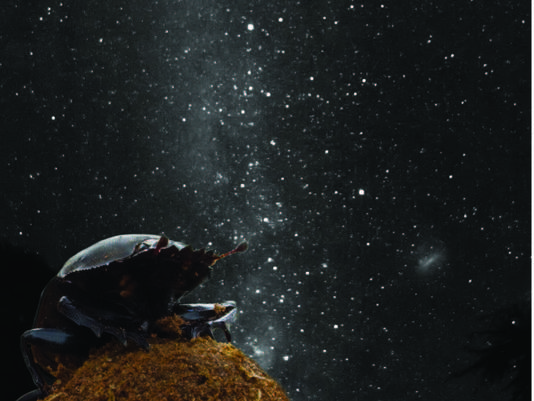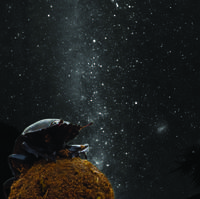Dung beetles aim for the stars
Keep your feet on the ground and keep reaching for the stars, as radio personality Casey Kasem always said. A good motto not just for pop-music count-down shows but also, it turns out, for dung beetles.
Biologists report that the lowly bugs, best known for rolling, burying and dining on dung, may share a navigational trick known until now only among birds, seals and people. In the Current Biology journal, a team led by Marie Dacke of Sweden's Lund University, report that dung beetles[1] follow straight paths on starry nights, but lose their way on overcast evenings.
""Even on clear, moonless nights, many dung beetles still manage to orientate along straight paths," said Dacke, in a statement. The key to the dung beetle's navigation seems to be the Milky Way, the white splash of stars across the night sky that marks the center-line of our galaxy. Galaxies are vast circular and spiral shaped collections of stars, hundreds of billions of them in the Milky Way, scattered throughout the cosmos.
The researchers wired up dung beetles in an arena inside a planetarium to determine how and whether the insects oriented themselves to the stars. "This finding represents the first convincing demonstration for the use of the starry sky for orientation in insects and provides the first documented use of the Milky Way for orientation in the animal kingdom," concludes the study.
About the Author

Dan Vergano
Dan Vergano, who has written about everything from asteroids to zooplankton, covers the intersection of science and society for USA TODAY.
Send Dan Vergano a Message
{ "assetid": "1861537", "aws": "tech/science/features_sciencefair", "aws_id": "tech_science_features_sciencefair", "blogname": "", "contenttype": "story pages ", "seotitle": "Dung-beetle-milky-way", "seotitletag": "Dung beetles aim for the stars", "ssts": "tech/sciencefair", "taxonomykeywords":"Dan Vergano,Science and technology,Sweden,Astronomy", "templatename": "stories/default", "topic":"dan-vergano,science-and-technology,sweden,astronomy", "videoincluded":"no", "basePageType":"story" }
References
- ^ http://dx.doi.org/10.1016/j.cub.2012.12.034 (dx.doi.org)











